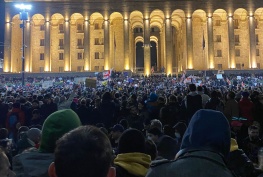By Anastasia Valeeva, TRACE Investigative Reporting Fellow 2022
The annual Global Investigative Journalism Conference took place the first week of November, but for the first time the world’s largest gathering of investigative journalists was online rather than in-person.
The Global Investigative Journalism Network said the conference featured 1,666 participants from 144 counties across six continents, and included 80 different sessions featuring 200 experts in investigative and data journalism.
As a data journalist attending this conference for the first time, I’ll share some personal highlights and trends I observed.
The conference started with a panel discussion about the state of investigative journalism amid the rise of autocrats, oligarchs and kleptocrats, available on YouTube here.
Several sessions were devoted to safety and security and investigations into attacks on journalists. Others were aimed at building stronger networks of journalists focused on the same topic or working in the same region. “It takes a network to fight a network,” said Paul Radu from the Organized Crime and Corruption Reporting Project, a Romanian who was an Alfred Friendly fellow in 2002
Two clear trends stood out to me when I observed the focus of the thematic panels from my home in Moscow: mastering the technologies for innovative investigations and refining niche reporting in many areas such as climate and medicine.
As for the technologies, apart from the usual lessons for working with data (using spreadsheets, programming languages, and data visualization tools), there were several particularly interesting sessions about using mapping and satellite imagery for investigations.
A team to watch is Visual Investigations at the New York Times, whose members are employing “digital sleuthing and the forensic analysis of visual evidence to find truth, hold the powerful to account and deconstruct important news events.”
Here’s a tipsheet they’ve shared.
It might be helpful to know that some of the tools for visual investigations are provided by Google, and a newsroom can get a free training session for its staff. Contacts and more information are available in this document. Also, here’s a short introduction to Google Earth.
As for the thematic coverage, my heart goes out to investigations of inequality. Three journalists from Brazil, the United States and South Africa shared their experiences of using data, drone imagery and traditional reporting to cover the growing divides in society.
One speaker at the session, MLK.50 journalist Wendi Thomas, collaborated with ProPublica on a series of stories about the nonprofit hospital that made millions suing the poor and its own staff.
Thomas explained how “power can be unbalanced between the journalist and the source” and why it is important for journalists to explain the consequences of reporting to the people they’re talking to.
The action guide on drone journalism, in turn, gives much more value to its ethics than to the technology per se.
The third speaker at the session, Elaíze Farias of Amazônia Real, said: “Doing investigative journalism in the Amazon requires a lot of effort, you need endurance, concentration and humility. These practices are, in most cases, more relevant than mastering technological tools.”
To sum up, the conference did a great job following and discussing the latest trends in investigative and data journalism, and provided a bunch of tipsheets and resources, many of which are available at the organization’s website, Global Investigative Journalism Network (GIJN)






